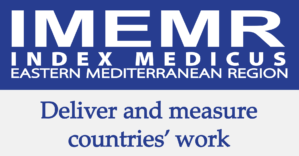Glucose Insulin Ratio in Hyper Insulinemic Women with Polycystic Ovarian Syndrome
DOI:
https://doi.org/10.53685/jshmdc.v3i1.98Keywords:
Hyperinsulinemia, glucose insulin ratio, PCOS womenAbstract
Background: Women with polycystic ovarian syndrome (PCOS) have insulin resistance and hyperinsulinemia that may play a key role in the pathogenesis of PCOS.
Objectives: To determine and compare glucose-insulin ratio in hyper-insulinemic women with the polycystic ovarian syndrome and healthy controls.
Materials & Methods: A cross-sectional comparative study was conducted at Lahore General Hospital. A total of 80 women 24-35 years of age were recruited from Lahore General Hospital. 50 women had PCOS, and 30 were healthy controls. PCOS was diagnosed by using the Rotterdam criteria. Height, weight, and waist circumference were measured. Glucose and insulin were estimated by the glucose oxidase method and ELISA, respectively. HOMA-IR was calculated to determine insulin resistance (IR). HOMA- β was calculated to assess the β-cell function. Fasting glucose and insulin ratio were also calculated.
Results: Mean age of the women with PCOS and healthy controls was 29.89±3.54 and 28.60±1.12 years, respectively (p>0.54). BMI and waist circumference of women with PCOS were higher compared to healthy controls (p>0.45). Fasting glucose, fasting insulin, HOMA- β, and IR were significantly higher in women with PCOS compared to healthy controls (p<0.001).
Conclusion: In addition to HOMA IR, the glucose-insulin ratio may be considered to assess hyperinsulinemia in women with polycystic ovary syndrome.
References
Højlund K. Metabolism and insulin signaling in common metabolic disorders and inherited insulin resistance. Dan Med J. 2014; 61(7): B4890.
Sayyah-Melli M, Alizadeh M, Pourafkary N, Ouladsahebmadarek E, Jafari-Shobeiri M, Abbassi J, et al. Psychosocial factors associated with polycystic ovary syndrome: a case-control study. J Caring Sci. 2015; 4(3): 225-231.doi:10.15171/jcs. 2015.023. DOI: https://doi.org/10.15171/jcs.2015.023
Li Y, Chen C, Ma Y, Xiao J, Luo G, Li Y, et al.. Multi-system reproductive metabolic disorder: significance for the pathogenesis and therapy of polycystic ovary syndrome (PCOS). Life Sci. 2019; 228: 167-175. doi: 10.10 16/j.lfs.2019.04.046. DOI: https://doi.org/10.1016/j.lfs.2019.04.046
Hsu MI. Changes in the PCOS phenotype with age. Steroids. 2013; 78(8): 761-766. doi: 10.1016/j.stero ids.2013.04.005. DOI: https://doi.org/10.1016/j.steroids.2013.04.005
Barber TM, Hanson P, Weickert MO, Franks S. Obesity and polycystic ovary syndrome: implications for pathogenesis and novel management strategies. Clin Med Insights Reprod Health. 2019; 13:1179558119874042. doi:10.1177/ 1179558119874042. DOI: https://doi.org/10.1177/1179558119874042
Yuan C, Liu X, Mao Y, Diao F, Cui Y, Liu J. Polycystic ovary syndrome patients with high BMI tend to have functional disorders of androgen excess: a prospective study. J Biomed Res. 2016; 30(3): 197- 202. doi: 10.2337/db12-0963. DOI: https://doi.org/10.7555/JBR.30.20140111
Chen YH, Heneidi S, Lee JM, Layman LC, Stepp DW, Gamboa GM, et al. miRNA-93 inhibits GLUT4 and is overexpressed in adipose tissue of polycystic ovary syndrome patients and women with insulin resistance. Diabetes. 2013; 62(7): 2278-2286. doi: 10.2337/db12-0963. DOI: https://doi.org/10.2337/db12-0963
Ezeh U, Chen IY, Chen YH, Azziz R. Adipocyte expression of glucose transporter 1 and 4 in PCOS: Relationship to insulin-mediated and non-insulin- mediated whole-body glucose uptake. Clin Endocrinol(Oxf). 2019; 90(4): 542552. doi:10.1111/ cen.13931 DOI: https://doi.org/10.1111/cen.13931
Nauck MA, Meier JJ. Diagnostic accuracy of an “amended” insulin-glucose ratio for the biochemical diagnosis of insulinomas. Ann Intern Med. 2012; 157(11): 767–775. doi.org/10.7326/0003-4819-157-11-201212040-00004 DOI: https://doi.org/10.7326/0003-4819-157-11-201212040-00004
Park SY, GautierJF, Chon S. Assessment of insulin secretion and insulin resistance in human. Diabetes Metab J. 2021; 45(5): 641-654.doi:10.409 3/dmj.2021.0220. DOI: https://doi.org/10.4093/dmj.2021.0220
Xu C, Zhou L, Wu K, Li, Xu J, Jiang D, et al. Abnormal glucose metabolism and insulin resistance are induced via the IRE1α/XBP-1 pathway in subclinical hypothyroidism. Frontiers in Endocrinol. 2019; 10:303.doi.org/10.3389/fendo. 2019.00303 DOI: https://doi.org/10.3389/fendo.2019.00303
Stovall DW, Bailey AP, Pastore LM. Assessment of insulin resistance and impaired glucose tolerance in lean women with polycystic ovary syndrome. J Womens Health (Larchmt). 2011; 20(1): 37-43. doi: 10.1089/jwh.2010.2053 DOI: https://doi.org/10.1089/jwh.2010.2053
Rotterdam ESHRE / ASRM - Sponsored PCOS Consensus Workshop Revised 2003 consensus on diagnostic criteria and long-term health risks related to polycystic ovary syndrome (PCOS). Hum Reprod. 2004; 19: 41–47. doi: 10.1016/j.fertnstert. 2003.10.0 04 DOI: https://doi.org/10.1093/humrep/deh098
Gutch M, Kumar S, Razi SM, Gupta KK, Gupta A. Assessment of insulin sensitivity/resistance. Indian J Endocrinol Metab. 2015; 19(1): 160-164. doi:10. 4103/ 2230-8210.146874 DOI: https://doi.org/10.4103/2230-8210.146874
Tao T, Wu P, Wang Y, Liu W. Comparison of glycemic control and β-cell function in new-onset T2DM patients with PCOS of metformin and saxagliptin monotherapy or combination treatment. BMC Endocr Disord. 2018; 18: 14 doi.org/10.1186/ s12902-018-0243-5 DOI: https://doi.org/10.1186/s12902-018-0243-5
Wu Q, Bai D, Yang Z, Liao Q. The prevalence of polycystic ovarian syndrome in Chinese women: a meta-analysis. Ann Palliat Med. 2021; 10(1): 74-87. doi: 10.21037/apm-20-1893. DOI: https://doi.org/10.21037/apm-20-1893
De Leo V, Musacchio MC, Cappelli V, Massaro MG, Morgante G, Petraglia F. Genetic, hormonal and metabolic aspects of PCOS: an update. Reprod Biol Endocrinol. 2016; 14(1): 38. doi: 10.1186/ s12958-016-0173-x DOI: https://doi.org/10.1186/s12958-016-0173-x
Ma L, Meng P, Duan Y, et al. Study on the related factors of polycystic ovary syndrome. Medicine of Shenyang Army 2009; 22: 64-66.
Lin Y, Li L, Xu R. The Relationship between Changes in Sex Hormone Level and Physiology and Disease of Women in Different Age Groups. Henan J Prev Med. 2010; 21: 179-181. doi: 10.1210/jc.2007-1738 DOI: https://doi.org/10.1210/jc.2007-1738
Bhattacharya K, SenguptaP, Dutta S, Chaudhuri P, Mukhopadhyay LD, Syamal AK. Waist-to-height ratio and BMI as predictive markers for insulin resistance in women with PCOS in Kolkata, India. Endocrine. 2021; 72(1): 86-95. doi:10.1007/s12020 -020-02555-3 DOI: https://doi.org/10.1007/s12020-020-02555-3
Pazderska A, Tun TK, Phelan N, McGowan A, Sherlock M, Behan LA et al. In women with PCOS, waist circumference is a better surrogate of glucose and lipid metabolism than disease status per se. Clin Endocrinal (Oxf). 2018; 88(4): 565-574. doi: 10.1111/cen.13542. DOI: https://doi.org/10.1111/cen.13542
Da Silva CDC, Vasques ACJ, Zambon MP, Camilo DF, De Bernardi Rodrigues AM, Antonio MARG, et al. Sagittal abdominal diameter resembles waist circumference as a surrogate marker of insulin resistance in adolescents-Brazilian Metabolic Syndrome Study. Pediatr Diabetes 2018; 19: 882– 891. doi: 10.1111/pedi.12664. DOI: https://doi.org/10.1111/pedi.12664
Manco M, Castagneto-Gissey L, Arrighi E, Carnicelli A, Brufani C, Luciano R, et al. Insulin dynamics in young women with polycystic ovary syndrome and normal glucose tolerance across categories of Body Mass Index. PLoS ONE 2014; 9(4): 92995. doi.org/10.1371/journal.pone. 0092995 DOI: https://doi.org/10.1371/journal.pone.0092995
Song DK, Hong YS, Sung YA, Lee H. Insulin resistance according to β-cell function in women with polycystic ovary syndrome and normal glucose tolerance. PLoS One. 2017; 12(5): e0178120. doi:10.1371/journal.pone.017 8120. DOI: https://doi.org/10.1371/journal.pone.0178120
Hucking K, Watanabe RM, Stefanovski D, Bergman RN. OGTT-derived measures of insulin sensitivity are confounded by factors other than insulin sensitivity itself. Obesity. 2008; 16: 1938– 1945. doi:10.1038/oby.2008 .336. DOI: https://doi.org/10.1038/oby.2008.336
Downloads
Published
How to Cite
Issue
Section
License
Copyright (c) 2022 Roohi Jabbar, Maria Hameed, Saima Tabassum, Saboohi Saeed, Tabinda Kazmi, Shazia Rashid

This work is licensed under a Creative Commons Attribution-NonCommercial 4.0 International License.
You are free to:
- Share — copy and redistribute the material in any medium or format
- Adapt — remix, transform, and build upon the material
- The licensor cannot revoke these freedoms as long as you follow the license terms.
Under the following terms:
-
Attribution — You must give appropriate credit, provide a link to the license, and indicate if changes were made. You may do so in any reasonable manner, but not in any way that suggests the licensor endorses you or your use.
-
Non Commercial — You may not use the material for commercial purposes.
-
No additional restrictions — You may not apply legal terms or technological measures that legally restrict others from doing anything the license permits.




















